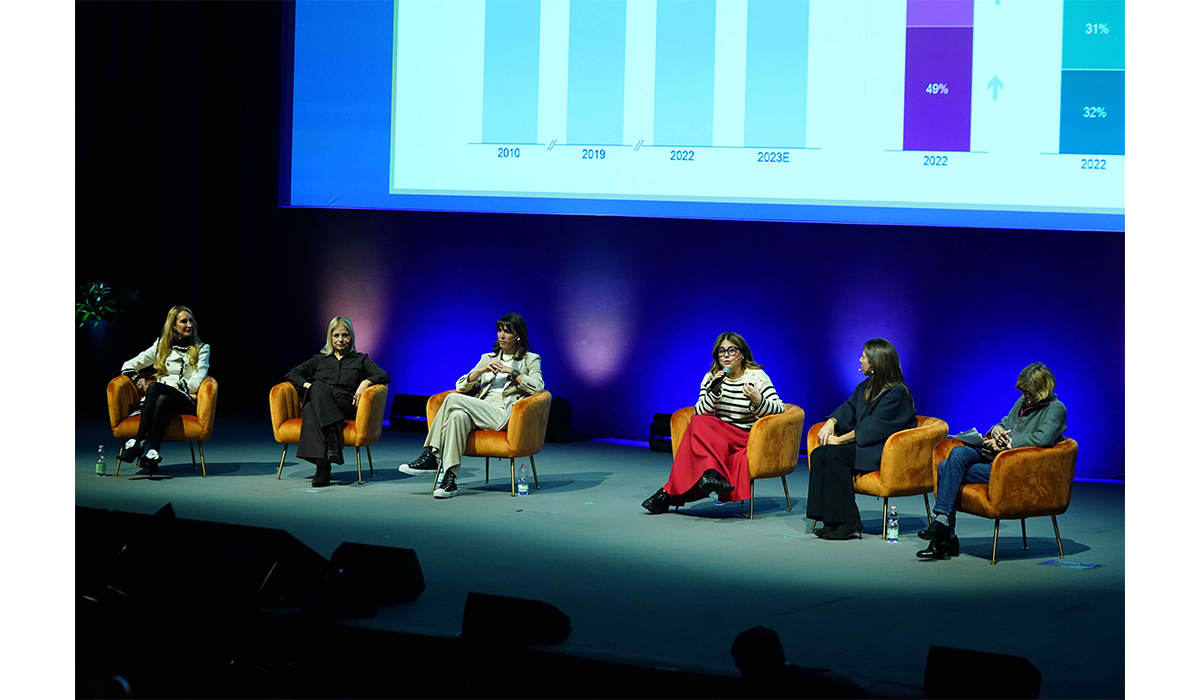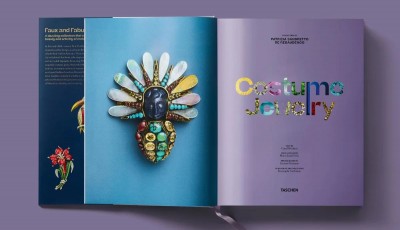Vicenzaoro Highlights, January 2024: From Product to Values. Brands Review Their Strategies
With Claudia D'Arpizio, Senior Partner and Global Head of Fashion & Luxury at Bain & Company, we took stock of the transition of brands from multi-brand to flagship store and the new levers for retail and corporate
There is art, a new value system and disintermediation in the relationship between brand and end customer that gives more control over storytelling. But there are also many opportunities for smaller companies. We discussed all this with Claudia D'Arpizio, one of the protagonists of the talk organized by Vhernier, last Saturday.
Luxury brands are increasingly reducing the distance to the final consumer by disintermediating distribution and taking control. What are the levers to prevent multi-brands from being “blacked out” or losing value in the eyes of the customer?
In light of the increasing relevance of storytelling and given the transformation from product-focused to value-based communication, jewelry brands are increasingly moving towards single- brand distribution, which gives them more control over storytelling. In this context, they keep only the most relevant multi-brand channels in their portfolio. This transition of larger brands towards single-brand distribution channels opens up space for new brands and smaller jewelry specialists: space which does, however, need to be conquered in a crowded competitive environment. However, the multi-brand channel is still key to guaranteeing the visibility of the brand itself as well as to support its positioning and “awareness” in the local and international territory. In order to ensure that this channel stays “successful”, brands in the industry - especially those not yet able to develop a global single-brand distribution - need to invest significantly in representation. This means support for retailers in terms of visual merchandising, sales force training, collaborative marketing and communication approaches. The jewelry industry has always made extensive and successful use of multi-brand distribution, but the strong changes taking place in consumer habits and in the complexity and integration of distribution ecosystems, now make it necessary for the approach to distribution to take a “quantum leap”. At the same time, enhancing the most influential brands for their consumers is still a key lever for multi- brands, which in doing so, maintain prominence and progressively create their own market positioning, differentiating themselves in the currently highly fragmented ecosystem and building consumer loyalty.
The power of art for jewelry, on how much it is still the domain of a niche or whether it can have wider repercussions in business management, is one of the main topic discussed in these days.
The jewelry world, and especially fine jewelry, sees several points of contact with the artistic sphere in terms of more or less direct models of inspiration (nature, architecture, sculpture). In business terms, the repercussions of this interconnection are therefore linked to potential brand narratives with references to the art world. At the same time, there is an attempt - limited at the moment to leading brands in the luxury sector - to extend its legitimacy to the cultural world, transcending the exclusively functional elements of products and embracing their symbolic elements instead. In light of this trend, the potential we see in this development is linked to increasing the relevance of the brand towards the end consumer as a true cultural catalyst, multiplying the moments (and reasons) for interaction between the two worlds.
In this scenario, Vhernier is the Italian and independent brand that has built its success on a very strong link with art, becoming increasingly more recognizable and relevant. In addition to these two elements, what must a brand have in order to create further growth opportunities?
The luxury industry is evolving towards a broader meaning, focused on elements of consumer value. Offering a good product is no longer enough to generate medium- to long-term growth opportunities. The success of “insurgent” brands in the luxury market is linked not only to their ability to offer products of excellent quality, but also to their efforts in building a differentiating brand platform - and the consequent associated narrative - capable of better intercepting the value systems of new consumers. The product, however, is still a fundamental element of the brand’s soul and, in this respect, product offer recognizability is becoming increasingly important as a point of reference and identification for the customer, outside of specific communication initiatives. It therefore becomes essential to work on the offer’s recognizability and distinctiveness by focusing on “families” of products linked by a common thread. Lastly, the offer of a distinctive omnichannel experience that integrates physical interaction with the digital ecosystem. This allows the consumer to be intercepted at other moments (besides the product purchase), creating a strong emotional bond, and increasing their loyalty to the brand.
Luxury brands are increasingly reducing the distance to the final consumer by disintermediating distribution and taking control. What are the levers to prevent multi-brands from being “blacked out” or losing value in the eyes of the customer?
In light of the increasing relevance of storytelling and given the transformation from product-focused to value-based communication, jewelry brands are increasingly moving towards single- brand distribution, which gives them more control over storytelling. In this context, they keep only the most relevant multi-brand channels in their portfolio. This transition of larger brands towards single-brand distribution channels opens up space for new brands and smaller jewelry specialists: space which does, however, need to be conquered in a crowded competitive environment. However, the multi-brand channel is still key to guaranteeing the visibility of the brand itself as well as to support its positioning and “awareness” in the local and international territory. In order to ensure that this channel stays “successful”, brands in the industry - especially those not yet able to develop a global single-brand distribution - need to invest significantly in representation. This means support for retailers in terms of visual merchandising, sales force training, collaborative marketing and communication approaches. The jewelry industry has always made extensive and successful use of multi-brand distribution, but the strong changes taking place in consumer habits and in the complexity and integration of distribution ecosystems, now make it necessary for the approach to distribution to take a “quantum leap”. At the same time, enhancing the most influential brands for their consumers is still a key lever for multi- brands, which in doing so, maintain prominence and progressively create their own market positioning, differentiating themselves in the currently highly fragmented ecosystem and building consumer loyalty.
The power of art for jewelry, on how much it is still the domain of a niche or whether it can have wider repercussions in business management, is one of the main topic discussed in these days.
The jewelry world, and especially fine jewelry, sees several points of contact with the artistic sphere in terms of more or less direct models of inspiration (nature, architecture, sculpture). In business terms, the repercussions of this interconnection are therefore linked to potential brand narratives with references to the art world. At the same time, there is an attempt - limited at the moment to leading brands in the luxury sector - to extend its legitimacy to the cultural world, transcending the exclusively functional elements of products and embracing their symbolic elements instead. In light of this trend, the potential we see in this development is linked to increasing the relevance of the brand towards the end consumer as a true cultural catalyst, multiplying the moments (and reasons) for interaction between the two worlds.
In this scenario, Vhernier is the Italian and independent brand that has built its success on a very strong link with art, becoming increasingly more recognizable and relevant. In addition to these two elements, what must a brand have in order to create further growth opportunities?
The luxury industry is evolving towards a broader meaning, focused on elements of consumer value. Offering a good product is no longer enough to generate medium- to long-term growth opportunities. The success of “insurgent” brands in the luxury market is linked not only to their ability to offer products of excellent quality, but also to their efforts in building a differentiating brand platform - and the consequent associated narrative - capable of better intercepting the value systems of new consumers. The product, however, is still a fundamental element of the brand’s soul and, in this respect, product offer recognizability is becoming increasingly important as a point of reference and identification for the customer, outside of specific communication initiatives. It therefore becomes essential to work on the offer’s recognizability and distinctiveness by focusing on “families” of products linked by a common thread. Lastly, the offer of a distinctive omnichannel experience that integrates physical interaction with the digital ecosystem. This allows the consumer to be intercepted at other moments (besides the product purchase), creating a strong emotional bond, and increasing their loyalty to the brand.






